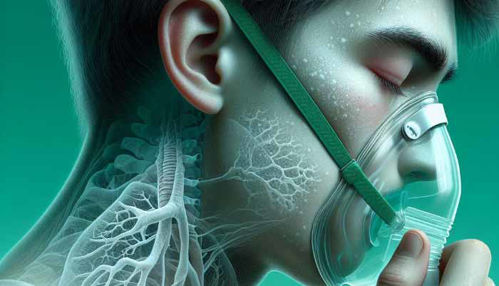In Slovenia, around 160 new patients with bladder cancer are diagnosed every year. The disease is three times more common in men than in women.
BLADDER CANCER: General | Symptoms and Diagnosis | Treatment and Prognosis | Questions and Answers | Sources/references
Some chemical substances concentrate in the bladder and cause cancer.
The most critical risk factor for bladder cancer is smoking, which accounts for at least half of all new cases. Chronic irritation due to schistosomiasis (infection with a parasite) or stones in the urinary bladder predisposes to cancer, but irritation is associated with it only in rare patients.
Image: The most critical risk factor for bladder cancer is smoking.
.jpg)
Urothelial carcinoma (also called transitional cell carcinoma) is a cancer that begins in the urothelial cells that line the urethra, bladder, ureters, renal pelvis, and some other organs. Almost all bladder cancers are urothelial carcinomas. Urothelial cells are also called transitional cells because they change shape. These cells can stretch when the bladder is full of urine and shrink when it is empty.
Other types of bladder cancer are rare. Squamous cell carcinoma is a cancer that starts in the squamous cells (thin, flat cells that line the inside of the bladder). This type of cancer can occur after prolonged irritation or infection with a tropical parasite called schistosomiasis. When chronic irritation occurs, the bladder's transitional cells can gradually change to squamous cells.
Adenocarcinoma is a cancer that starts in the epithelial cells found in the bladder's lining. Gland cells in the bladder produce mucus and other substances. Small cell carcinoma of the bladder is a cancer that begins in neuroendocrine cells (nerve-like cells that release hormones into the blood in response to a signal from the nervous system). Non-muscle invasive bladder cancer is cancer that has not reached the muscle wall of the bladder. Most bladder cancers are not muscle-invasive. Muscle-invasive bladder cancer is cancer that has spread through the lining of the bladder and into or through the muscle wall of the bladder.
Symptoms and diagnosis
Bladder cancer is suspected even before the onset of symptoms if an excessive number of red blood cells is found in the urine with a normal microscopic examination. The urine may also be visibly bloody. Later, pain, a burning sensation during urination, and a frequent, sudden urge to urinate appear. The symptoms are similar to those of a bladder infection (cystitis), or the infection occurs simultaneously with cancer.
We think about it if the problems do not stop despite the treatment of the infection with an antibiotic. A microscopic examination or other tests reveal more red and white blood cells in the urine, and a special examination (cytology) often reveals cancer cells.
Video content: Bladder cancer - questions and answers.

Cystography or intravenous urography (X-ray imaging after injecting a contrast medium into a vein) often shows an uneven outline of the bladder wall, which is suspicious for a tumor. Abnormalities in the urinary bladder are often detected by ultrasound examination, computed tomography, or magnetic resonance imaging (MRS), which the patient undergoes for another reason.
Suppose any of these tests reveal a growth. In that case, the doctor examines the inside of the bladder with a cystoscope (inserted through the urethra) and takes tissue samples from suspicious areas for microscopic examination (biopsy). Sometimes, the cancerous tissue can be removed entirely with a cystoscope.
Treatment and prognosis
Bladder cancer that is limited to the mucosal surface or has penetrated only the upper muscle layer can be removed entirely during cystoscopy. However, new cancerous areas most often appear in the same place or, more often, in another place in the bladder.
Recurrences of cancer confined to the inner part of the bladder can be reduced after removal by injecting (instillation) chemotherapy drugs or the BCG vaccine (which stimulates the body's immune system) into the bladder. With instillations, we also treat patients whose tumors could not be removed during cystoscopy. However, deep-seated cancerous tumors covering the bladder wall cannot be removed during cystoscopy.
Usually, to patients, the bladder is partially or entirely removed by surgery (cystectomy). We also remove the regional lymph nodes and determine the spread of the cancer. Treatment with radiation or in combination with chemotherapy sometimes cures the cancer.
Picture: Patients usually have their bladder removed by surgery.
.jpg)
After the bladder is completely removed, urine must be drained from the body by another route. Usually, the urologist makes an opening (stoma) in the abdominal wall, connecting it to the intestinal sphincter, into which both ureters are inserted. Urine flows into the outer sac.
Many alternative methods of external urine collection are suitable for some patients. We divide them into two categories: orthotopic neobladder and continuous external collection through the skin. In both cases, an internal collector must be made from the intestine. In an orthotopic bladder, the reservoir is connected to the urethra. The patient learns to empty the new bladder by relaxing the pelvic muscles and increasing the pressure in the abdomen.
Urine is excreted through the urethra in the same way as naturally. Patients usually do not leak urine during the day, but incontinence may occur at night. In the continuous discharge of urine through the skin, the collector is connected to a stoma in the abdominal wall. The patient does not need an external bag because the urine remains in the container until it is emptied through the stoma with the inserted catheter. Empty it several times a day at certain time intervals.
Image: A cancer patient who already has tumors is being treated with chemotherapy.
.jpg)
A cancer patient who already has tumors is treated with chemotherapy. Many drug combinations are effective, but only a few patients are cured.
A urethral caruncle is an expected, small, red, painful growth at the entrance of a woman's urethra. It is not cancerous and causes bloody water. Let's remove it with surgery.
Questions and answers
What causes bladder cancer?
Most cases of bladder cancer appear to be the result of exposure to harmful substances that cause abnormal changes in the cells of the bladder over many years. Tobacco smoke is a common cause, and it is estimated that more than 1 in 3 bladder cancers are caused by smoking[1].
How high is the mortality rate for bladder cancer?
The 5-year relative survival rate for people with bladder cancer that has not spread beyond the inner layer of the bladder wall is 96%. Almost half of people are diagnosed with this stage. If the tumor is invasive but has not yet spread outside the bladder, the 5-year relative survival is 70%[2].
Who most often gets bladder cancer?
Bladder cancer occurs mainly in older people. About 9 out of 10 people with this cancer are over the age of 55. The average age of people at the time of discovery is 73 years. Overall, the chance of men developing this cancer in their lifetime is about 1 in 28.19[3].
Is bladder cancer a hereditary disease?
Some people inherit genetic changes from their parents that increase their risk of bladder cancer. However, bladder cancer does not often run in families, and inherited gene mutations are not thought to be the leading cause of the disease[4].
What are the first symptoms of bladder cancer?
The first sign of bladder cancer is blood in the urine, which is painless for most people. In the early stages, this may be your only symptom. Other symptoms include changes in bladder habits, frequent urinary tract infections, and pelvic or back pain that may be on one side[5].
Sources and references
Extensive health manual for home use, Youth Book Publishing House
- Bladder cancer - https://www.nhs.uk
- Bladder Cancer: Statistics - https://www.cancer.net
- Key Statistics for Bladder Cancer - https://www.cancer.org
- What Causes Bladder Cancer? - https://www.cancer.org
- Bladder cancer symptoms: early to advanced - https://www.royalmarsden.nhs.uk











 Facebook
Facebook
 Instagram
Instagram
 info@moja-lekarna.com
info@moja-lekarna.com

